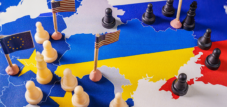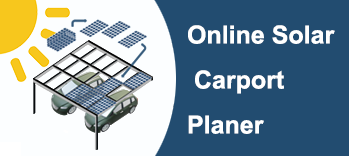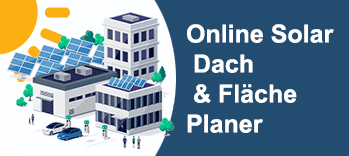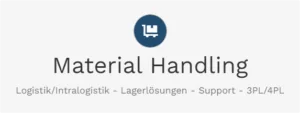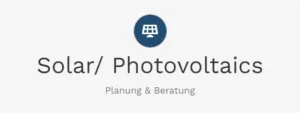The economic impact of the war between Russia and Ukraine
Xpert pre-release
Language selection 📢
Published on: September 10, 2025 / Updated on: September 10, 2025 – Author: Konrad Wolfenstein
The economic consequences of three years of war
Arms boom versus structural problems: Why Russia's growth is crumbling
The war between Russia and Ukraine, which has been ongoing since February 2022, has not only resulted in enormous human losses but also profound and lasting economic damage in both countries. More than three years after the invasion began, the economic consequences are becoming apparent in all their complexity. While both economies are suffering from the direct and indirect effects of the conflict, they have developed different strategies to deal with the economic challenges.
Ukraine experienced a dramatic decline in its economic output of almost 30 percent of its gross domestic product in the first year of the war, but was able to stabilize from 2023 onwards and has since shown moderate recovery rates. Russia, on the other hand, initially benefited from a war-induced economic boom, driven primarily by the arms industry. The Russian economy grew by 4.1 percent in both 2023 and 2024, but this trend is now slowing noticeably, and structural problems are becoming clearly visible.
Suitable for:
- Russia & Ukraine: A Global Disaster for Logistics and Supply Chain – The Continuation of War and Peace
The Russian war economy under pressure
Slowdown in economic growth
The Russian economy is at a turning point. After the strong growth of recent years, the economy is weakening significantly. In January 2025, overall economic production exceeded the previous year's level by only 3 percent, compared to 4.5 percent in December 2024. The Central Bank forecasts a further slowdown to 2.9 percent for the first quarter of 2025 and expects growth of only between 1.0 and 2.0 percent for 2025 as a whole.
This development is particularly remarkable given that growth in recent years was primarily driven by the massive expansion of the defense industry. Manufacturing production rose by 8.5 percent in 2024, largely due to the increase in defense production. At the same time, production in the mining and raw material extraction sector fell by 0.9 percent.
Financial challenges and structural problems
Financing the war presents Russia with ever-greater challenges. War spending already increased by 42 percent in 2024, and the defense budget approved for 2025 calls for further massive increases. At 13.5 trillion rubles, this corresponds to approximately 145 billion US dollars and an increase of more than 25 percent over the previous year. This means that military spending will account for between 7 and 8 percent of Russia's gross domestic product, a record in Russia's post-Soviet history.
To finance these enormous expenditures, the Russian government is relying on various sources. A particularly worrying development is the plundering of the welfare fund, from which the equivalent of €4.8 billion is to be withdrawn in 2025 to offset the budget deficit. This fund was originally intended for the Russian pension system, and its continued depletion represents a significant burden on future social security.
Inflation and monetary policy as a brake on growth
A central problem facing the Russian economy is persistent inflation, fueled by war-related government spending. To combat this spiraling price increase, the Russian Central Bank temporarily raised the key interest rate to 21 percent; it is now at 18 percent. However, these drastic measures have had significant negative effects on the private sector.
With interest rates so high, small and medium-sized businesses can no longer afford loans. Many consumers prefer to keep their money in savings accounts rather than spend or invest. This development is leading to a significant slowdown in economic growth outside the defense sector and threatens to trigger a wave of corporate bankruptcies that could also affect large companies and key enterprises.
Structural transformation to a war economy
The war has led to a fundamental transformation of Russia's economic structure. The state has assumed an even more central role in the economy and abandoned its previous conservative budget policy in favor of higher deficits. However, this transformation brings with it considerable problems.
The massive shift of labor to the defense industry, where wages are significantly higher, has led to acute labor shortages in other sectors of the economy. At the same time, labor and credit costs in the private sector have risen significantly. Important consumer goods such as butter and eggs have not only become more expensive but have even experienced temporary shortages.
The Ukrainian economy in a struggle for survival
Stabilization after the initial shock
The Ukrainian economy has shown remarkable resilience after the dramatic slump in the first year of the war. Following a 28.8 percent decline in 2022, it grew by 5.3 percent in 2023. Growth of approximately 2.9 to 3.5 percent is forecast for 2024. This stabilization is all the more remarkable given that it occurred under continuous war conditions with almost daily air strikes on cities and infrastructure.
Ukraine quickly adapted to the new reality. Companies relocated their production to safer western and central regions, developed alternative logistics routes, and switched to alternative energy sources. These adjustments enabled the economy to function despite the ongoing conflict.
Massive war damage and infrastructure destruction
The direct war damage is immense and continuously growing. The World Bank's Damage and Needs Assessment estimates war damage for 2024 at $155 billion, equivalent to Ukraine's current gross domestic product. Total reconstruction needs are estimated at $524 billion over a ten-year period, nearly three times the 2024 GDP.
The destruction of the energy infrastructure is particularly dramatic. By 2024, Ukraine only had about a third of its energy supply capacity. Europe's largest nuclear power plant in Zaporizhia has been occupied by Russian troops since March 2022. The occupation of eastern Ukraine also brought almost all of the coal reserves and a large portion of the natural gas reserves under Russian control.
Agriculture, a traditionally important economic sector in Ukraine, has also been severely affected. A quarter of Ukraine's territory is mined and damaged by war, a large portion of which was agricultural land. Cultivated land has declined from 28.5 million hectares in 2021 to 22.5 million hectares in 2023. About half of the agricultural machinery is no longer operational.
Demographic crisis and labor shortages
Ukraine is facing a severe demographic crisis that is significantly impacting its long-term economic prospects. The population has declined by approximately 10 million people, or 25 percent, since the conflict began in 2014, including 8 million since the start of the Russian full-scale invasion in 2022. The labor force has declined from 17.4 million in 2021 to around 14 million currently.
This trend is expected to worsen. Estimates suggest that up to 100,000 jobs could remain unfilled, particularly in key sectors such as logistics, transport, IT, construction, and agriculture. By 2033, the demand for additional skilled workers could rise to as many as 4.5 million. The birth rate has fallen to one child per woman, the lowest in Europe and one of the lowest in the world.
The long-term effects of this demographic development are severe. Even in optimistic scenarios, demographers predict a population decline of 21 percent by 2052. In the most pessimistic scenario, the population could shrink by as much as 31 percent.
Financing through international aid
Ukraine is heavily dependent on international support for its economic stability. Over half of the state budget is financed from abroad. The Ukrainian state budget for 2025 envisages revenues of the equivalent of €50.5 billion and expenditures of approximately €85 billion. The projected deficit amounts to €35.4 billion, or 19.4 percent of gross domestic product.
The largest budget item is national defense, with expenditures of €48 billion, equivalent to more than a quarter of total economic output. In addition to these budget expenditures, Ukraine received an average of $46 billion annually in direct military aid between 2022 and 2024.
Europe has established itself as Ukraine's most important supporter. By February 2025, Europe had mobilized a total of €23.2 billion more in support than the United States. Germany alone has provided Ukraine with aid totaling almost €44 billion since February 2022. A key instrument is the ERA loan mechanism, which provides Ukraine with a total of €45 billion in loans, financed by proceeds from frozen Russian assets.
The effectiveness of Western sanctions
Comprehensive sanctions regime
Western sanctions against Russia now comprise 18 packages and are among the most comprehensive economic sanctions in history. They target various sectors of the Russian economy: the energy and financial sectors, the arms industry, and the so-called Russian shadow fleet.
In the energy sector, the price cap for Russian crude oil was reduced from $60 to $47.60 per barrel. The EU imposed an embargo on Russian oil transported by ship and banned the import of products made from Russian crude oil refined in third countries. In addition, 444 vessels of the Russian shadow fleet were subject to port access bans and service bans.
In the financial sector, 13 more banks were excluded from the SWIFT financial communications system, and transactions for three Russian financial institutions were banned. Russian assets worth over €300 billion were frozen.
Medium-term impact of sanctions
The sanctions have certainly had an effect, albeit not to the extent originally hoped. Russia's economy has become significantly more vulnerable to external shocks. If export revenues decline, the Russian central bank would sorely miss its frozen currency reserves and would have little to do if the ruble collapsed.
In the long term, Russia will suffer greatly from the fact that the sanctions have made the country toxic to foreign investors. Even Chinese investors are currently showing no interest in long-term economic engagement in Russia, as ties with the West remain more important. The Russian government's expropriation of Western companies has made the country unattractive as an investment location for a very long time.
The Challenge of the Shadow Fleet
A key problem in enforcing the sanctions is the Russian shadow fleet. It consists of approximately 650 to 1,200 ships with opaque ownership structures that are used to circumvent the sanctions. The fleet has been growing by an average of 30 ships per month for the past six months, three times as fast as in 2024.
While in spring 2022, approximately 20 percent of Russian oil exports were carried by ship using tankers with no connections to Western countries, the shadow fleet now accounts for 85-90 percent of crude oil exports. Since the introduction of the price cap, Russia has earned almost €15 billion in additional crude oil exports using shadow fleet tankers.
Operating Shadow Fleet vessels is extremely lucrative. A single vessel can earn $30 to $40 million in just one year, while used oil tankers cost around $12 million to purchase. These enormous profit margins explain the Shadow Fleet's rapid growth despite the risks.
Hub for security and defense - advice and information
The hub for security and defense offers well-founded advice and current information in order to effectively support companies and organizations in strengthening their role in European security and defense policy. In close connection to the SME Connect working group, he promotes small and medium -sized companies (SMEs) in particular that want to further expand their innovative strength and competitiveness in the field of defense. As a central point of contact, the hub creates a decisive bridge between SME and European defense strategy.
Suitable for:
Demographics, growth, costs: Long-term consequences of the war for both countries
Strategies and measures to persevere
Russian adaptation strategies
Russia has developed various strategies to mitigate the economic impact of the war and sanctions. The most important is the aforementioned transition to a war economy with massive state investments in the defense industry. However, this policy of military Keynesianism has reached its limits and is leading to structural distortions.
To finance the war, Russia has created a virtually secret financing plan. Since February 2022, the state has been taking over war-related loans from Russian banks through special legislation. The Russian government sets the terms for these loans, which then flow to companies producing war goods. This hidden spending is a major cause of high inflation and the resulting high key interest rates.
Another important building block is increased economic cooperation with China and other non-Western countries. The war has transformed Russia into a more closed economy, one that is more dependent on China. This new orientation makes it possible to procure Western technologies and goods indirectly and to develop alternative markets for raw materials.
Ukrainian survival strategies
Ukraine has made remarkable adjustments to keep its economy afloat under wartime conditions. The most important strategy is the spatial redistribution of economic activity. The relocation of production capacity from the eastern regions to western and central regions began as early as 2014, and this process intensified after the full-scale invasion in 2022.
Companies developed new logistics routes to circumvent the blockade of traditional trade routes. The Ukrainian Sea Corridor improved logistics, although exports are expected to remain weak in 2025. Many companies switched to alternative energy sources and developed decentralized energy systems to be less vulnerable to attacks on centralized energy infrastructure.
An important aspect is the mobilization of domestic resources. Despite the war, a remarkably high level of investment in the economy has been maintained, with annual growth rates of 10 to 50 percent. These figures far exceed GDP growth rates and demonstrate a strong belief in protecting the territory and maintaining peace.
International support measures
The international community has developed comprehensive support measures for Ukraine. In addition to direct financial and military assistance, innovative financing mechanisms have been created. The ERA loan mechanism uses proceeds from frozen Russian assets to finance Ukrainian defense and reconstruction.
Concrete plans for reconstruction have already been developed. Ukraine estimates the total cost at more than €850 billion over a period of 14 years. Financing will be provided through two funds: a Ukraine fund managed by Kyiv with over €460 billion from confiscated Russian assets, and a second fund with nearly €400 billion from private investments.
Europe has taken a leading role in providing support. Germany, France, Italy, and Poland, together with the European Commission and the European Investment Bank, have launched the European Flagship Fund for Ukraine's Reconstruction. With an initial capital of €220 million, the fund aims to mobilize around €500 million by 2026.
Suitable for:
Economic forecasts and long-term effects
Russian economic outlook
Forecasts for Russia's economic development are consistently pessimistic. International institutes expect growth of only 1.0 to 2.0 percent for 2025, compared to 4.1 percent in the previous two years. The Kiel Institute for the World Economy forecasts only 1.5 percent for 2025 and 0.8 percent for 2026. The International Monetary Fund is even more pessimistic, anticipating only 0.9 percent growth for 2025.
This slowdown is primarily due to the Russian central bank's slamming its monetary policy brakes. High interest rates, currently at 18 percent, are choking the economy because loans are becoming unaffordable and threatening a wave of corporate bankruptcies that could also affect large corporations.
In the longer term, Russia's economic development will continue to fall further behind what the country could have achieved without the war and sanctions. In terms of lost potential economic growth, the war could even cost Russia $1.3 trillion, based on projections of growth by 2026.
Ukrainian economic outlook
Short-term forecasts for Ukraine are also cautious. Economic growth of only around 2 percent compared to the previous year is forecast for 2025. The Vienna Institute for International Economic Studies even predicts a further deterioration in the economic outlook, primarily due to the destruction of critical infrastructure and the worsening labor shortage.
Even under optimistic assumptions, real GDP in 2025 is likely to be about 20 percent below the pre-war level of 2021. A return to pre-war levels is expected in the best-case scenario for 2033. Overall, the Ukrainian economy is expected to remain 17 percent below pre-war levels in real terms in 2026.
The long-term effects, however, are even more serious. The demographic crisis will shape Ukraine for decades. The population has declined from 51.9 million in 1991 to approximately 37.6 million in 2023. Considering only the government-controlled territory, the population is even lower at 32.6 million.
Reconstruction as an opportunity
Despite the enormous challenges, Ukraine's planned reconstruction also offers opportunities for sustainable economic development. The reconstruction concepts rely heavily on renewable energies and green technologies. Cities like Trostyanets in the Sumy Region are striving to become green model cities and convert their energy supply entirely to renewable sources.
Ukraine has great potential for localizing production capacities in green value chains such as solar energy, wind power, and battery technology. The combination of domestic raw materials, a skilled workforce, and EU demand could contribute to economic recovery and integration into European supply chains.
The European Bank for Reconstruction and Development has unveiled a Renewable Energy Risk Reduction Facility in Ukraine, designed to protect investors against price fluctuations in the Ukrainian electricity market. Such instruments are crucial for mobilizing private investment in reconstruction.
The economic resilience of both countries
After more than three years of war, both economies demonstrate both resilience and structural weaknesses. Russia initially benefited from a war-induced economic boom, but now faces significant structural problems. The transition to a wartime economy boosted growth in the short term but hampered long-term growth targets and made the economy unbalanced.
After the initial shock, Ukraine has shown remarkable resilience and stabilized its economy. However, it is heavily dependent on international support and faces enormous demographic and infrastructural challenges.
Both countries can sustain the war economically for some time, albeit at very different costs. Russia has greater financial reserves but suffers from the structural distortions of the war economy and increasing international isolation. Ukraine is more vulnerable but receives continuous international support and has already adapted its economy to war conditions.
In the long term, the war will impose enormous costs on both countries. For Russia, this means increasing decoupling from the global economy and structural problems that will continue to have repercussions for years after the war ends. For Ukraine, it is about nothing less than the complete reconstruction of the country under completely new demographic and economic conditions. International support will be crucial to not only stabilize Ukraine but also achieve sustainable modernization.
Your global marketing and business development partner
☑️ Our business language is English or German
☑️ NEW: Correspondence in your national language!
I would be happy to serve you and my team as a personal advisor.
You can contact me by filling out the contact form or simply call me on +49 89 89 674 804 (Munich) . My email address is: wolfenstein ∂ xpert.digital
I'm looking forward to our joint project.








